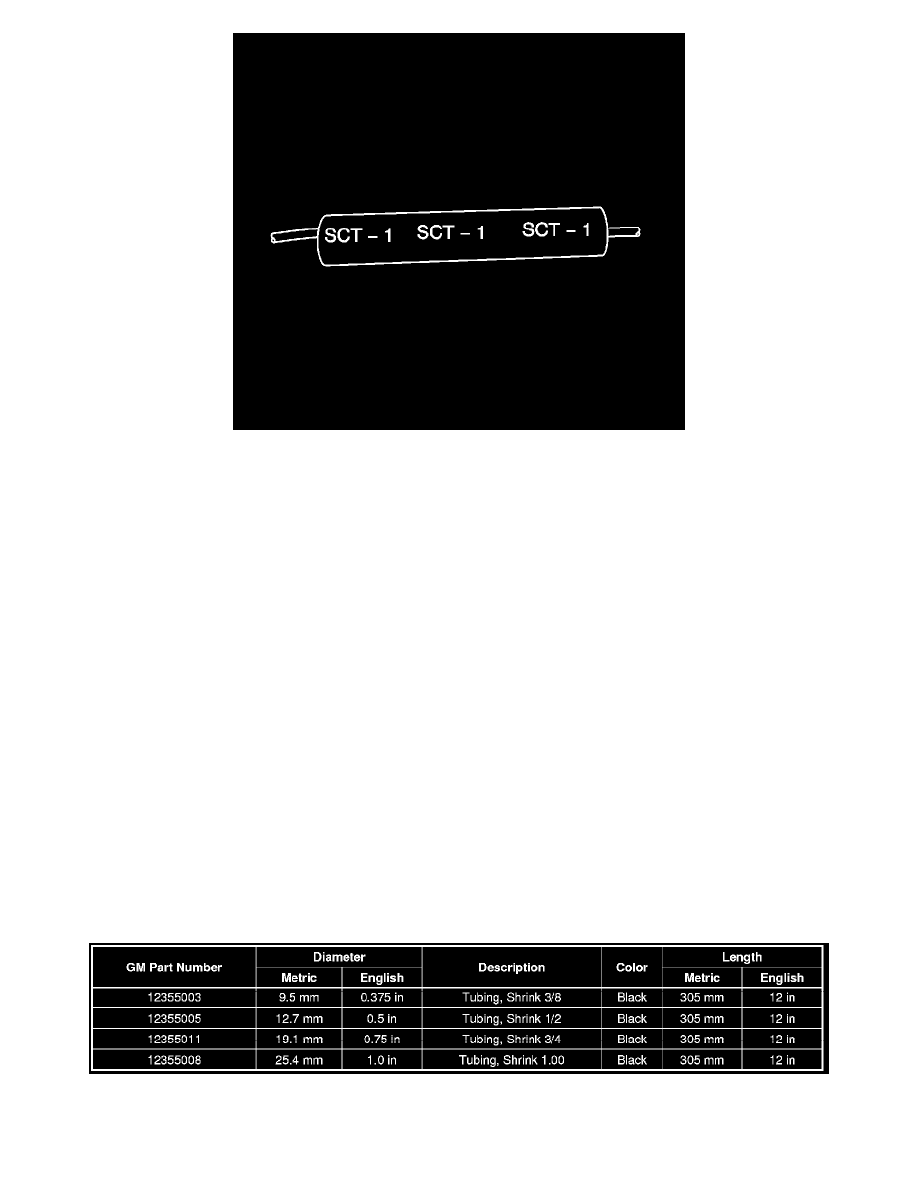Escalade ESV RWD V8-6.2L (2010)

13. Center the high temperature SCT1 shrink tube over the DuraSeal splice sleeve.
14. Using the heat torch, apply heat to the high temperature heat shrink tubing.
15. Gradually move the heat from the center to the open end of the tubing:
*
The tubing will shrink completely as the heat is moved along the insulation.
*
A small amount of sealant will come out of the end of the tubing when sufficient shrinkage is achieved.
16. Replace any reflective tape and clips that may have been remove during the repair.
Repairing Damaged Wire Insulation
Repairing Damaged Wire Insulation
Danger: In order to reduce the risk of personal injury, loss of high voltage isolation to ground and higher system impedance, do not attempt to
repair any HV wiring, connector, or terminal that is damaged. High voltage coaxial type cables are not repairable. Never attempt to repair a
coaxial type cable. The entire cable/harness or component must be replaced. In order to maintain system integrity and personal safety, never
attempt to repair any high voltage wiring, cables, or terminals. Performing this procedure on high voltage circuits may result in serious injury
or death.
If the wire insulation has been chafed, or broken, enough to show the conductive portion of the wire, and the wire is not damaged, determine the length
of insulation that needs to be repaired. If the repair is less than 280 mm (11 in), cut the wire within the damaged area. Than slide the appropriate heat
shrink tubing (listed below) over the wire, and repair the wire by splicing the wires together. Refer to Splicing Copper Wire Using Splice Sleeves (See:
Testing and Inspection/Component Tests and General Diagnostics/General Electrical Diagnostic Procedures/Wiring Repairs/Splicing Copper Wire
Using Splice Sleeves). Once the wire is spliced together slide heat shrink tubing over the damaged area and apply heat to seal the repaired wire.
If the wire is damaged, or the damaged area is larger than 280 mm (11 in), than replace the damaged wire by splicing in a new section of wire. Refer to
Splicing Copper Wire Using Splice Sleeves (See: Testing and Inspection/Component Tests and General Diagnostics/General Electrical Diagnostic
Procedures/Wiring Repairs/Splicing Copper Wire Using Splice Sleeves).
